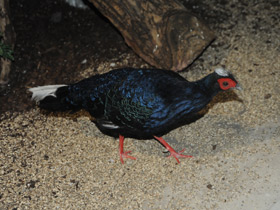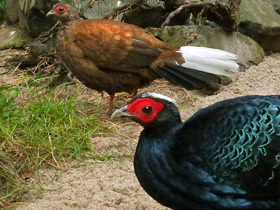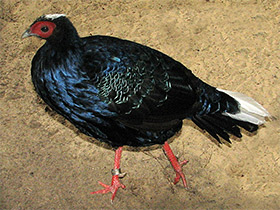The Vietnamese pheasant Lophura hatinhensis
The Vietnamese pheasant was discovered in 1964. It is endemic to central Vietnam. The species occur in and around the Ke Go Nature Reserve (Ha Tinh province). The total range is very small, estimated at just 2,900 square km, and is severely fragmented.
These pheasants are very similar in appearance to Edward’s pheasants, and some scientists believe this bird to be a subspecies of Edward’s pheasant. Owing to the rather secretive nature of this bird, only a relatively small amount of research has been done into the biology of the Vietnamese pheasant in the wild. It is known, however, that the Vietnamese pheasant feeds on grain, seeds, plants and insects. The bird builds its nest on the ground, laying a clutch of 5 to 7 eggs. The incubation period lasts for 21-22 days. The Vietnamese pheasant is classified as endangered in the IUCN Red List of Threatened Species.
The male Vietnamese pheasant is a stunning bird that has shiny black plumage, with dark blue tones and metallic blue-edged feathers on the body, as well as metallic green fringes to the upper wing. Standing out in contrast to this rich, dark plumage are the white, elongated central tail feathers and the short, shaggy white crest. The females are drabber in appearance, with a rather plain, greyish-brown plumage.
The breeding season lasts from late February through April. The female is capable of producing fertile offspring from the age of two years. The male displays to the female by raising his crest, ruffling up his back feathers and whirring his wings very quickly.


















































